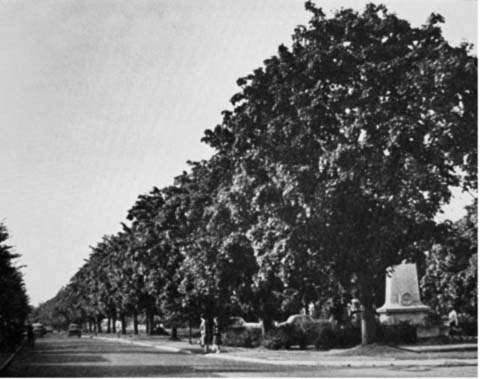
Firstly, welcome to what will be my last article. I need to concentrate on other ventures but I have really enjoyed writing for you each month. I always try to find out new information and challenge some of my own ideas of what makes a good garden. This garden has taken 9 years to reach maturity and I, like everyone else, have been challenged by Cranleigh’s clay and the vagaries of climate change, especially this year, when it has been SO very dry and I have disconnected the irrigation system, to help save water – deliberately not by putting a fork through it! The garden was opened for the first time in July, to the U3A Garden Club and they enjoyed the rewilding project whilst tucking into tea and cake!

Tea and cake on our Open Day
The key to creating a garden is succession planting and establishing a really good backdrop of trees and shrubs, with lots of different coloured leaves and stems, so you can rejoice in greens! This means that you have a base colour all year round and the flowers add lots of interest. I often repeat the same shrub such as Choisya ternata Sundance along each side of the flower beds, so your eye is drawn from side to side. As you know by now, I love to glimpse the garden beyond, which is called borrowed vision, so you are enticed to move further down the garden, to find out what treats may appear round the next corner. It is quite a challenge keeping the beds full of colour and do treat yourself to a visit to Christopher Lloyd’s garden ‘Great Dixter’, as his long border is a wonderful example.
If you do want to add a last blast of colour then here are some ideas. However, you really will need to dig a good sized hole and mix slow release fertiliser and water release granules into the soil, firm the plant in well and water every couple of days. So here are some ideas:
Pink/red
-French Lavender
-Phlox ‘Chelsea’
-Antirrhinum
-Osteospernum
Blue
-Geranium ‘Orion’
-Asters
-Salvia ‘Blue Enigma’
-Echinacea Purpurea
White
-Japanese Anemone
-Echinacea ‘White Swan’
-Leucojum
Yellow/orange
-Zinnia
-Crocosmia ‘Star of the East’
-Rudbeckia ‘Goldstrum’
I always set myself some aims – quite often ridiculous challenges! – so this time I wanted to become self-sufficient with my own veggies and fruit, as the cost of food increases – again without the watering system! I am not alone, as retailers are reporting booming sales of kits and seeds. I have grown all the veggies from seed and have been reasonably successful. However, the beans have grown very slowly, I lost 3 tomato plants to white fly infestations and all the salad crops decided to mature in the same week – thank goodness I like salad! So, I have sown some more seeds for a later crop and a pack of seeds costing £2 will keep me in salad for weeks. Also, the Chelsea chop on the Phlox was a great success, as it has been in full bloom in June, July and hopefully into August and the roses are ready to bloom again, as I pruned the stems back to below a second node after the flowers had started dropping their petals, to encourage more blooms later this month.

My brother’s experiments have met with some success too as he has found that the tomato and basil plants have done much better when grown in compost enriched with mycelium rich soil.
The RHS has come up with 10 ways to create a great-looking, low maintenance garden, which I thought I would share with you:
- Ditch the lawn and replace it with larger beds, decking and a gravelled area – instead I have allowed the grass to grow longer in certain areas and mow less often, so it is full of vetch, bugle and other wild flowers!
- Pick plants that are well suited to your soil and location – i.e. sun or shade loving – they have an online plant selector to help with this.
- Go with large with pots, as they need to be watered less often and add water retaining granules.
- Keep it simple and hardy shrubs and evergreen plants are key – as I have mentioned already!
- Choose long-lasting combinations – such as glossy leaves, grasses, conifers and evergreens, just adding seasonal bedding plants for extra colour.
- Search out Award of Garden Merit (AGN) plants
- Make the lawn easier to mow by installing permanent edges, such as a run of bricks, so you don’t have to edge it each time.
- Extend the garden upwards with colourful climbers, such as Virginia creeper.
- Use mulches on the beds to reduce the need for watering and weeding.
- Embrace a bit of wildness – a more relaxed approach will benefit you and the wildlife!
Just make life easier for you and the plants – maybe at last I can start to practice what I preach! I hope you take time to enjoy your garden, whatever the month and I wish you every success and happiness.











